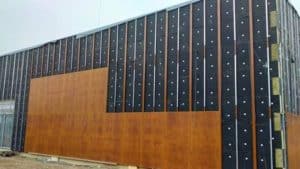Confusing the terms “non-combustible” and “fire retardant” is very common. They are, however, completely different.
One of the most common mistakes people make is assuming that if something isn’t flammable or combustible it automatically means that it is fire retardant. The truth is that the two terms are not interchangeable and there are many materials
The word “non-combustible” is derived from the Latin words “non” and “comburere” which together mean “does not make things burn.” Non-combustible objects generally do not burn under real-world conditions and it is a simple, unambiguous quality.
On the other hand, fire-retardant materials will react to a fire by increasing the fuel due to chemicals which can lead to explosions. The level of resistance they provide is harder to measure
The importance of not emitting any fire particles when in case of fire is why non-combustibility can be found in building regulations globally. This makes it an important element for safety when there is a fire.
Homes and buildings need to be built in a way that is non-combustible in the case of a fire. Non-combustibility is a core feature of fire regulations around the world, and it’s also crucial in making buildings safe for inhabitants.
Non-combustible material will not burn, so they are commonly used for fire regulations. Non-combumebte is most often found in the construction of buildings, furniture or various decor.
Fire retardant
A “fire retarding” material, on the other hand, is also combustable. In most cases there’s no global standard for measuring which products contribute to fire spread and growth. Some ways to do this include:
- It’s important to know how easily this product might start a fire.
- How much heat is released when it burns, heat release rate (HRR).
- How fast/slow the fire spreads
- How the material disintegrates during its burning
- The type of smoke is produces, and toxicity
With a variety of different parameters, combustible products have a complex set of rating schemes that often describe fire performance in relation to the testing conditions.
Non-combustible
The problem with non-combustible materials is that they are hard to manufacture, which increases the cost. It is also difficult to make this material in different shapes and sizes.
Fire retardant materials are made of two or more fireproof materials that are joined together. These materials can be manufactured in different shapes and sizes, but they may not be as strong as regular building material.
There are many benefits to using fire retardant material. Some of which are it protects against fire, smoke, and smoldering. Fire retardants are also good for the environment because they are non-combustible.
Some disadvantages to using fire retardant material is that they can be expensive and may not be able to protect all types of materials.






